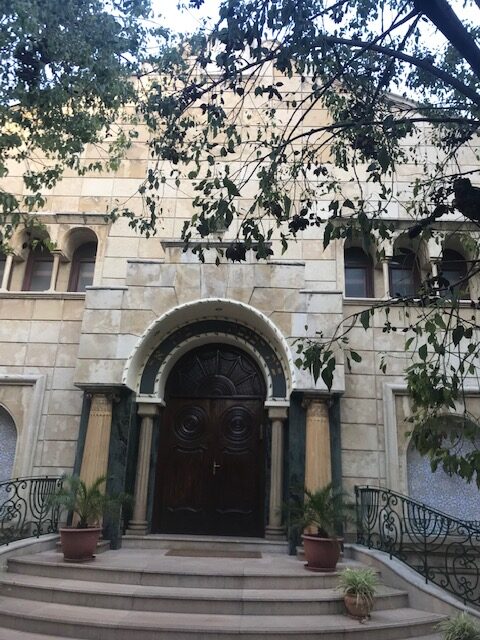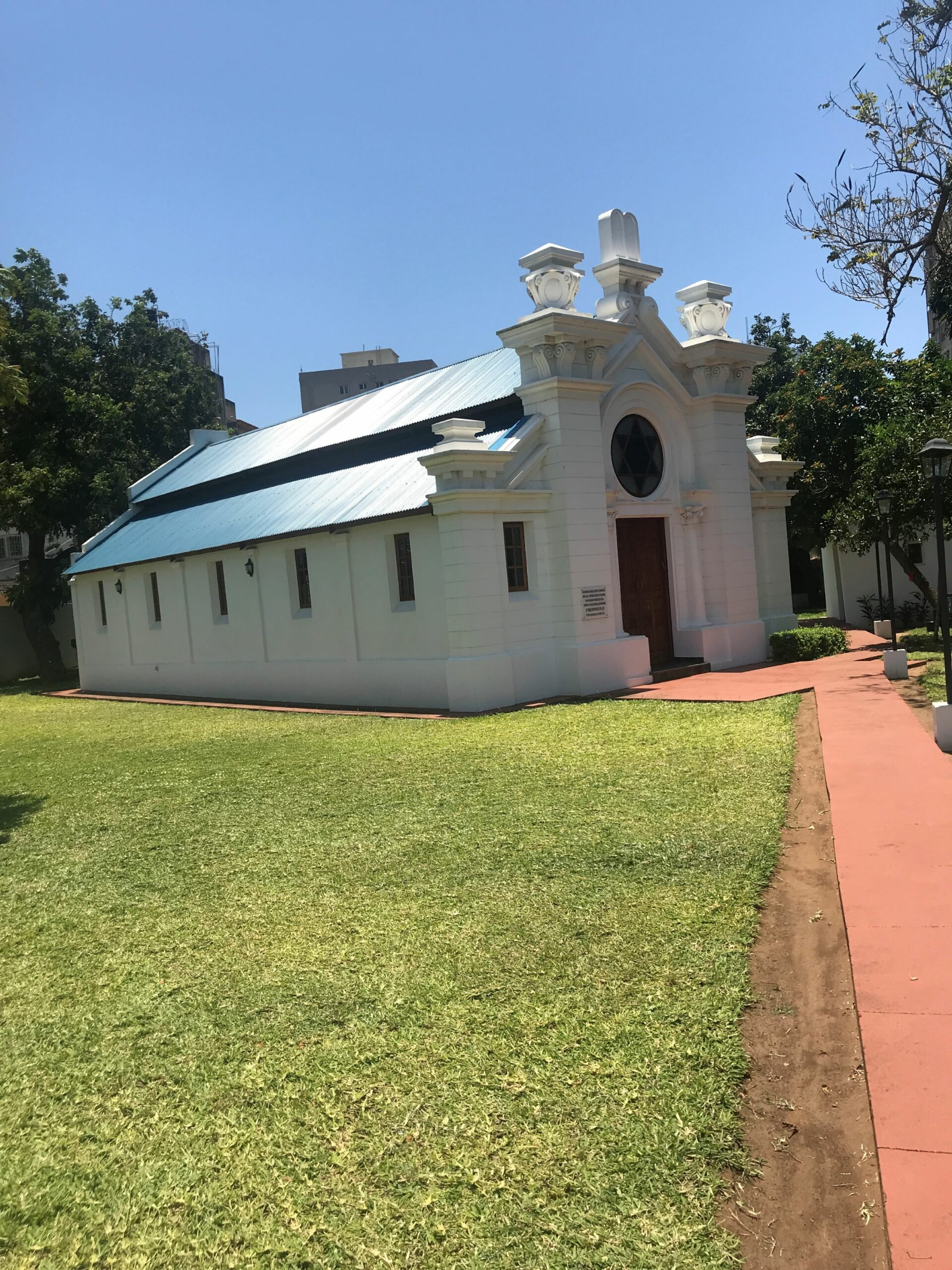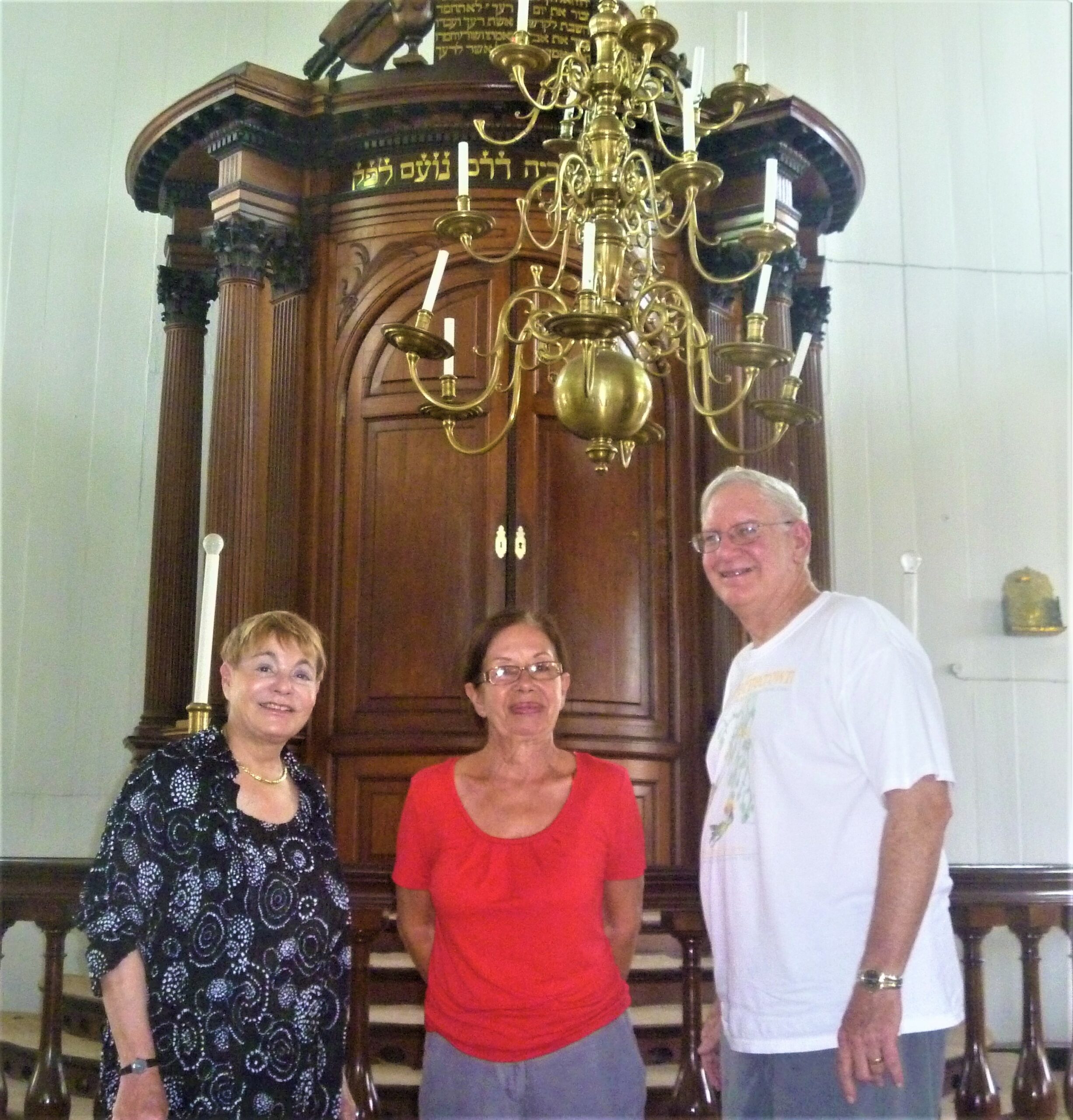Jewish Diaspora We Have Met in Africa and South America
Memories of Ukraine (1966 and 2001)
November 13, 2023To the North Pole on the Yamal (1998)
November 13, 2023Jewish Diaspora We Have Met in Africa and South America
Rich & Fran Juro
In our travels around the world, we have seen Jews and synagogues in some unlikely places. Here’s some of them:
AFRICA:

When we were in Morocco with our cousin Gail Lieb, she introduced us to one Jewish local who had no intention of leaving Morocco for Israel; in fact, he resented the people who were urging him to emigrate. There’s only about 2000 Jews left in Morocco; but now in Casablanca is the wonderful Museum of Moroccan Judaism, the only museum in Arab lands devoted to Judaism.
In Ethiopia, according to the government officials when we were there 20 years ago, all the Beta Israel (Jews) had already emigrated to Israel. Unofficially, there may be 25,000 Jews still in the highland villages of Ethiopia. We found people in Gondar (the center of the Jewish area) selling souvenirs depicting Solomon, stars of David, and other tourist memorabilia. Whether these people were Jewish, Orthodox Christians, or those converted to Christianity we couldn’t tell. Ethiopian Orthodox Christianity has some trademarks of Judaism: Stars of David in the churches, male circumcision, aversion to pork, and observance of Saturday with religious services. One legend that may partially explain the Ethiopian Christians antipathy to Jews is the story of Judit, the Warrior Queen. According to the 1200 year old saga, there was a Christian kingdom in Aksum, the northern Ethiopian city that supposedly houses the Ark of the Covenant; and there was a rival kingdom of the Jews south of it. The legend continues: the Jewish king defeated the Christian king, but was killed in battle. The Jewish princess, Judit, acceded to the throne, and then sacked Aksum and killed all of the Christian king’s family. Judit ruled for 40 years, and her descendants kept the Jewish kingdom thriving for 400 years, until it was defeated by the Christians.
Tunisia, which had the only Arab Jew elected to its Parliament, and the oldest synagogue in Africa: things have been going badly for the 1000 Jews left in Tunisia since the “Arab spring” years ago.
Democratic Republic of the Congo: There’s a big, beautiful Chabad in Kinshasa, the capital of the DRC, with French-speaking, Montreal-raised, Rabbi Shlomo Bentolila, serving the needs of the locals and visitors for 30 years. The rabbi’s son-in-law, from Paris, was supposed to open a Chabad in the Ivory Coast in 2018, but we’re not sure if it happened. Meanwhile, Rabbi Shlomo is the head of the Chabad of Central Africa with operations in Ghana, Nigeria, Uganda, Rwanda, and maybe the Ivory Coast.

Mozambique: In the former Portuguese East Africa, enough Jewish sailors and merchants settled there over the centuries so that a synagogue was built in 1926. During World War II the Jewish population reached 500. But after WW II, and during the Mozambican Civil War after 1976, most Jewish people emigrated to neighboring South Africa. In 1989 a non-Jewish businessman organized the reestablishment of Synagogue Honen Dalim in Maputo, the capital.
 Today, the synagogue is beautiful but there’s only a few Jews left to use it.
Today, the synagogue is beautiful but there’s only a few Jews left to use it.
Republic of South Africa: This country has 75,000 Jews, the most in Africa. Most are nominally Orthodox, and most live in Johannesburg or Cape Town. Kosher food is readily available including in the Johannesburg airport when we were there. There are kosher restaurants, hotels, and even a winery. Most of the Jewish youth attend Jewish schools. There are many synagogues, and also museums devoted to Jewish life, and Holocaust centers. Most of the Jewish residents have stayed in South Africa, but now some young adults are emigrating to Australia, Israel, Europe, or the USA. We enjoyed a lovely Sabbath meal at our friend Munro’s house overlooking the Atlantic Ocean in the best area of Cape Town.
Mauritius(independent nation in the Indian Ocean): Mauritius’ Jewish past dates back to 1940 when 1,584 Jewish refugees were shipped to the island at the behest of the British mandate in Palestine. Their war years were spent in a detainment camp; in 1945 they were allowed to make aliyah. Today’s small Jewish community boasts members from South Africa, Australia, France, and Israel. Most of these residents are involved in the textile and diamond industries, though the community’s president breeds crocodiles, native turtles, and monkeys.
Eritrea:
Possibly the saddest story about Jews, and actually the whole country, is about Eritrea, located between Ethiopia and the Red Sea. Merchant Jews settled there from Yemen in the 19th century and set up the Asmara Synagogue in 1906 in the capital city. During the 1930’s Jews fleeing Europe raised the population to over 500. In 1948, with the independence of Israel, many Eritrean Jews moved there. During the Eritrean War for Independence in the 1970’s, many others left. Since then Eritrea has become a totalitarian state with so many human rights violations that the USA has a consulate there rather than an embassy. There’s only one Jew left in Eritrea: Sami Cohen, who personally maintains the Asmara Synagogue. We had the pleasure of talking with him at his lovely house in Asmara for two hours.

He told us about the Irgun and other Jewish fighters who brought terror to the British in the 1940’s; then the Brits sent hundreds of them, without trial, to Eritrea. They escaped, or went to Israel after 1948. There has never been any Eritrean official anti-Semitism. Despite this, Sami Cohen’s kids are in Israel and Europe. Asked what will happen to the synagogue after him, Sami replied: “It’s up to God”.
Rwanda: We visited the Genocide Museum in Kigali (the capital) and wept at the moving depictions of the murder of hundreds of thousands of Tutsis at the hand of their neighbors, the Hutus, in three horrific months in 1994. At the end of that museum, there are rooms devoted to some of the other genocides: Cambodian, Armenian, Bosnian, and, of course, the Holocaust. As one observer described it: “Tutsis and Jews were both dehumanized and vilified.”
SOUTH AMERICA:
Argentina and Brazil both have large Jewish populations. But we visited some others:
Ecuador: When we visited Quito, the 9,000 foot high capital of Ecuador, we didn’t know if we’d be able to visit their JCC. But our guides persisted in calling the phone number we gave them, and finally we made an appointment. The JCC is a large complex in a northern suburb of Quito, only 15 minutes from the Equator. We entered the large metal gates after getting permission from the security office, even though there’s no recent history of anti-Jewish activity in Ecuador. The JCC contains a soccer field, a large pool, and tennis and squash courts. There’s a Kosher kitchen, a large event venue, and the new synagogue is nearby. (There was a supposedly a small synagogue in downtown Quito but I’m not sure its still going.) The friendly executive director told us that the original Ecuadorian Jews were Sephardic and fleeing from the Spanish and Portuguese Inquisitions. The Jewish population reached 5,000 when many fled from Germany fled in the 1930’s. The number of Jews has since declined until now it’s in the hundreds. But the community is obviously well-functioning. It operates the highly regarded Albert Einstein School for grades K-12, although 90% of the students are not Jewish. Finally, the director contacted the director of the Paraguayan JCC to set up an appointment for us.
Paraguay: A visit to the Paraguayan JCC was similar to Ecuador’s. A gated fence, a large complex, and a cordial executive director. The Jews didn’t start arriving in Paraguay until 100 years ago, but 15,000 came before and after World War II because of Paraguay’s liberal immigration policies. That Josef Mengele and thousands of other Germans sympathetic to the Nazis came post-WW II didn’t endanger the Jews there. Now there’s only about 1000 Jews, but the number is stable. The immigration of Argentinian Jews about equals the number of Jews leaving. There is a Jewish school, a synagogue, a Chabad, a Jewish museum, and even a Holocaust studies center.
Suriname: Located on the north coast of South America, Suriname boasts a long and distinguished Judaica history. It was first settled in the 1500’s by Sephardim fleeing the Spanish and Portuguese Inquisition. In 1652 English Jews set up Jodensavanne (Jewish savannah), a large, successful Jewish agricultural settlement with a synagogue. They even tried to establish an autonomous Jewish territory there. In 1667 the Dutch acquired Suriname, partially in trade for New Netherlands (it was then renamed New York). For more details, see our blog on Suriname. See our Niue memoir for two Israelis living in far off Oceania. Also see other Jewish diaspora in our memoirs of Albania, Armenia, Finland, Iran, Kosovo, Moldova, the “Stans” (Uzbekistan), and Syria.

